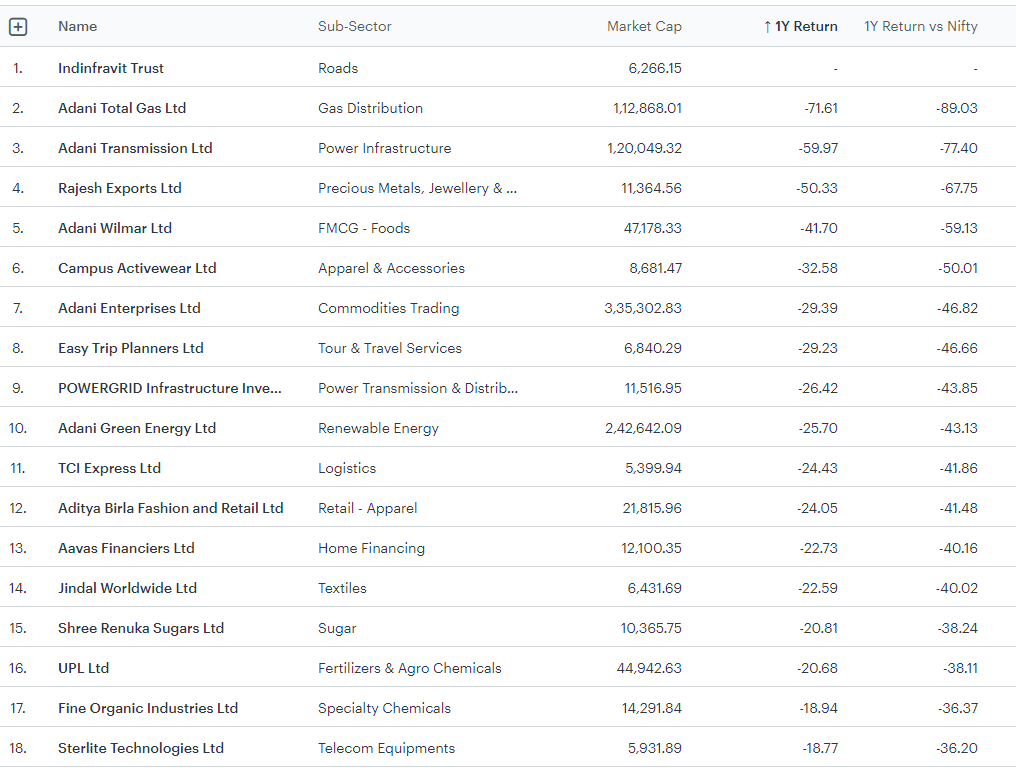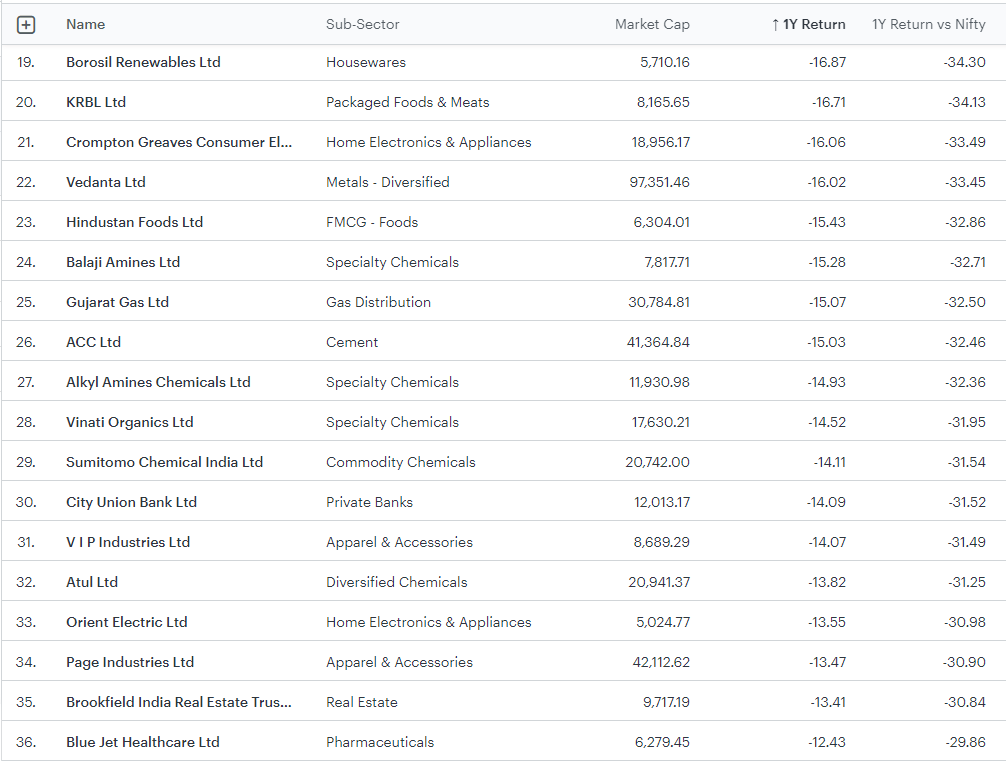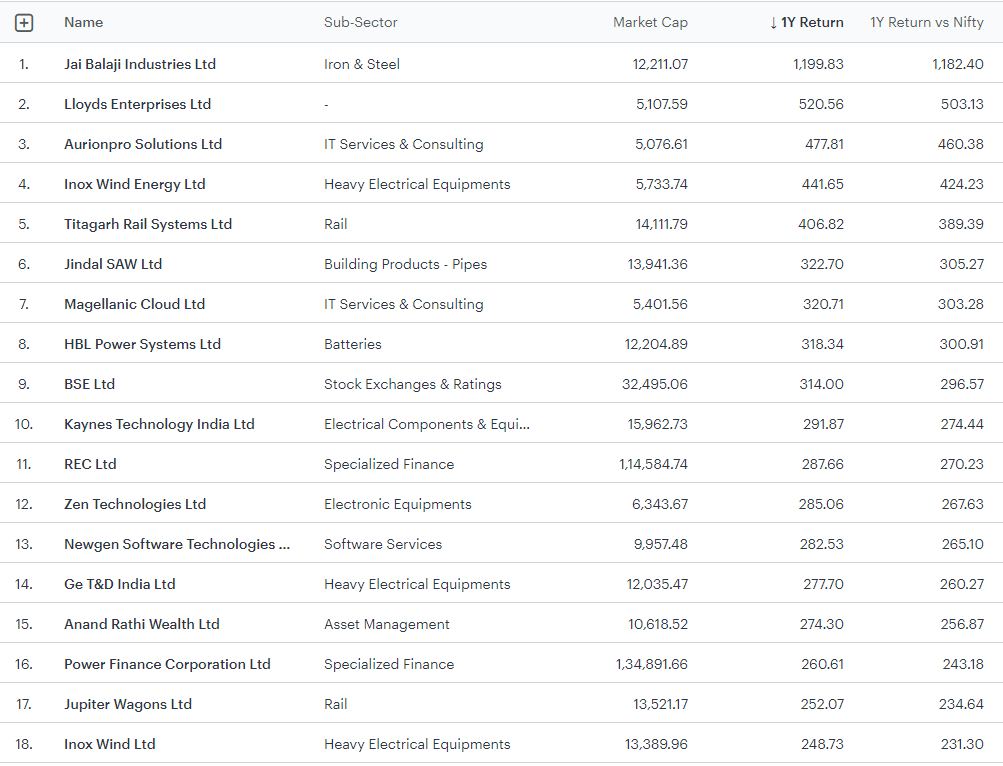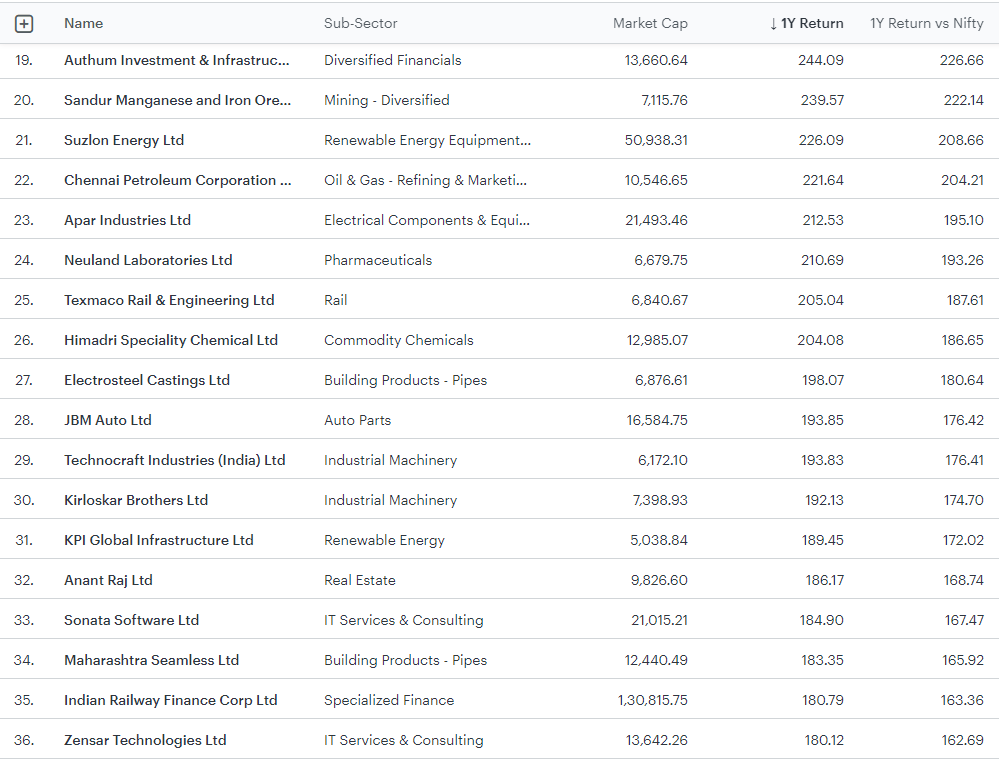
As investors, our primary goal is to achieve good performance in our portfolio. However, it is equally important to avoid poor performers that can nullify the impact of the good stocks. In this article, we will discuss how to identify and eliminate underperforming stocks from our portfolio, thereby improving overall performance.
Imagine having a well-diversified portfolio with 20 stocks, out of which 15 are performing well, and 5 are underperforming. The overall performance of the portfolio will be significantly influenced by the poor performers. No matter how well the other stocks are doing, the negative impact of a few weak stocks can nullify their gains. Hence, it is crucial to identify and address underperforming stocks promptly.
To identify underperforming stocks, we can analyse the yearly performance of stocks with a market capitalization above 5000 crores. This filtering ensures that we focus on stocks of reasonable size and exclude smaller companies. By sorting the yearly performance, we can pinpoint the poorest performers in the market.
Worst Performers


Best Performers


Once we have identified underperforming stocks, the next step is to take action. It is crucial to book losses early and allow winning stocks to continue their upward trend. By cutting our losses and selling underperforming stocks, we prevent further erosion of our portfolio’s performance.
On the other hand, we should hold on to stocks that exhibit strength and generate significant gains. By staying with the market’s strength, we increase the chances of achieving higher returns.
As an investor, it is crucial to focus on the strength exhibited by stocks rather than their past performance alone. For instance, even companies like Page Industries and Vinati Organics, which were once top performers, have experienced significant losses in the last year (-14% and -13% respectively). Therefore, we should continuously reassess stocks in our portfolio and adjust our holdings based on their current performance and potential for future performance.
By differentiating between stocks that exhibit strength and those that underperform, we can automatically create better performance in our portfolio. This approach allows us to avoid the constant dilemma of deciding what to buy and what to sell. Instead, we can rely on the stock’s performance as the primary criterion to make decisions, simplifying our investing strategy.

If you have any questions, please write to support@weekendinvesting.com








